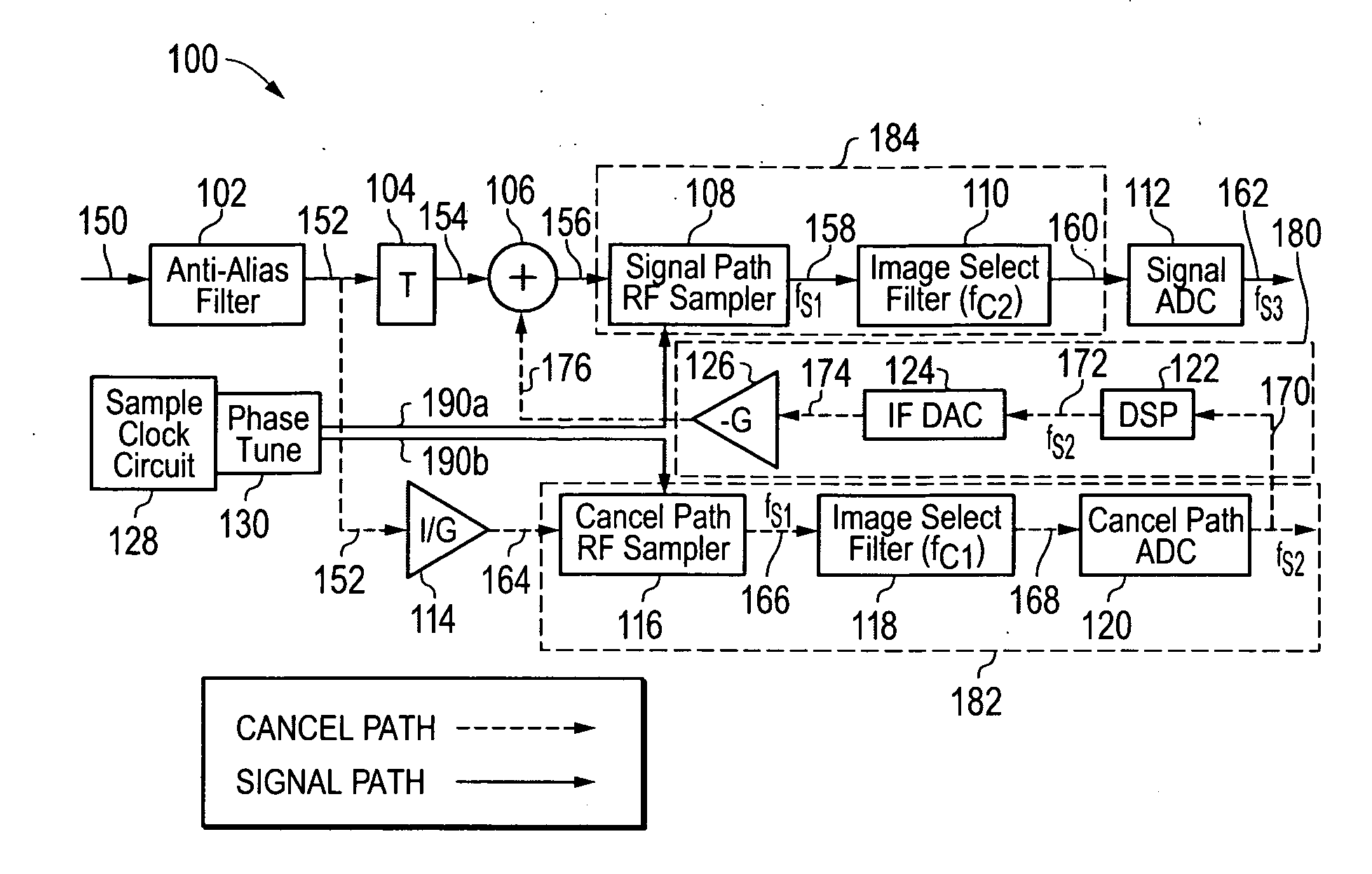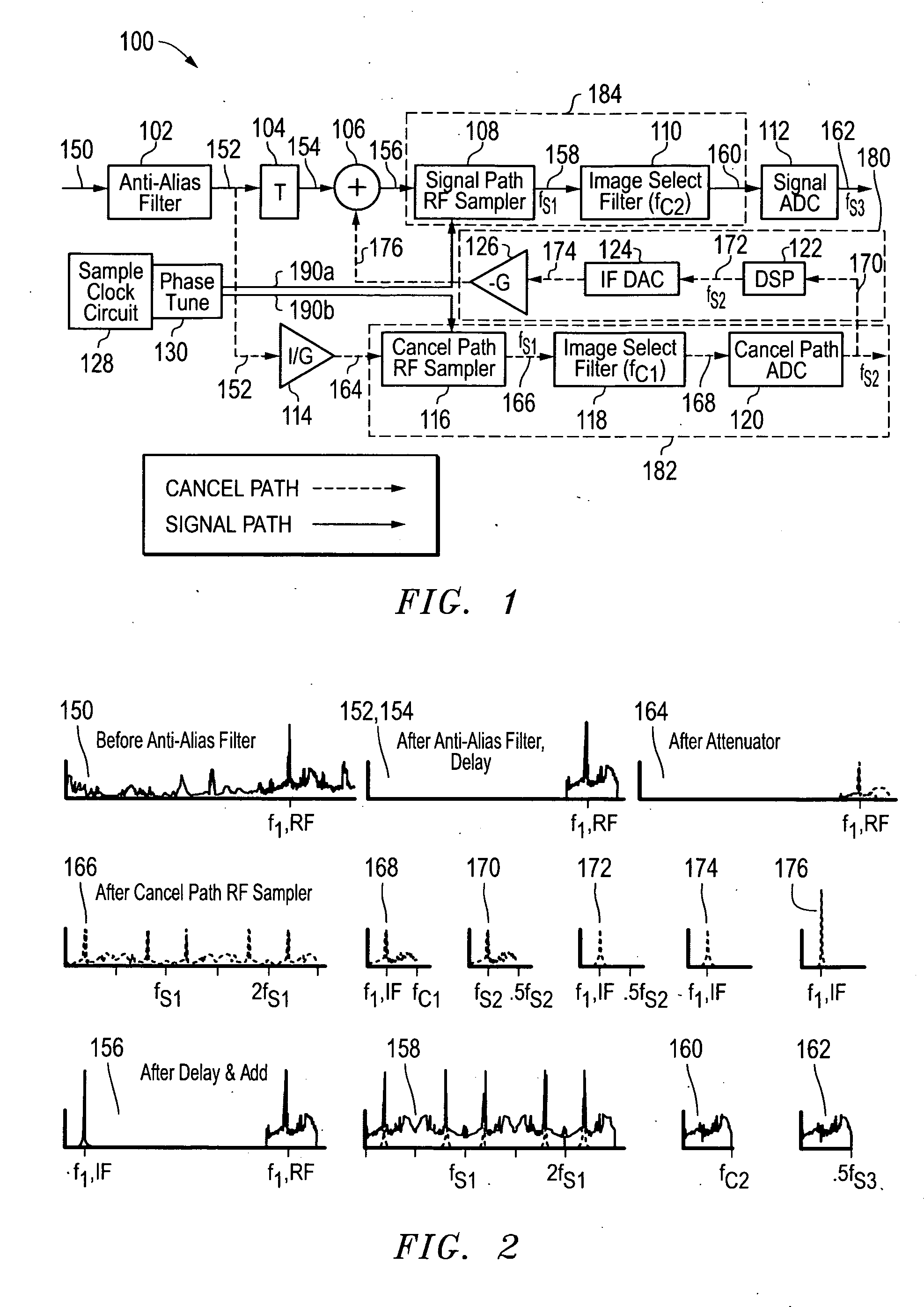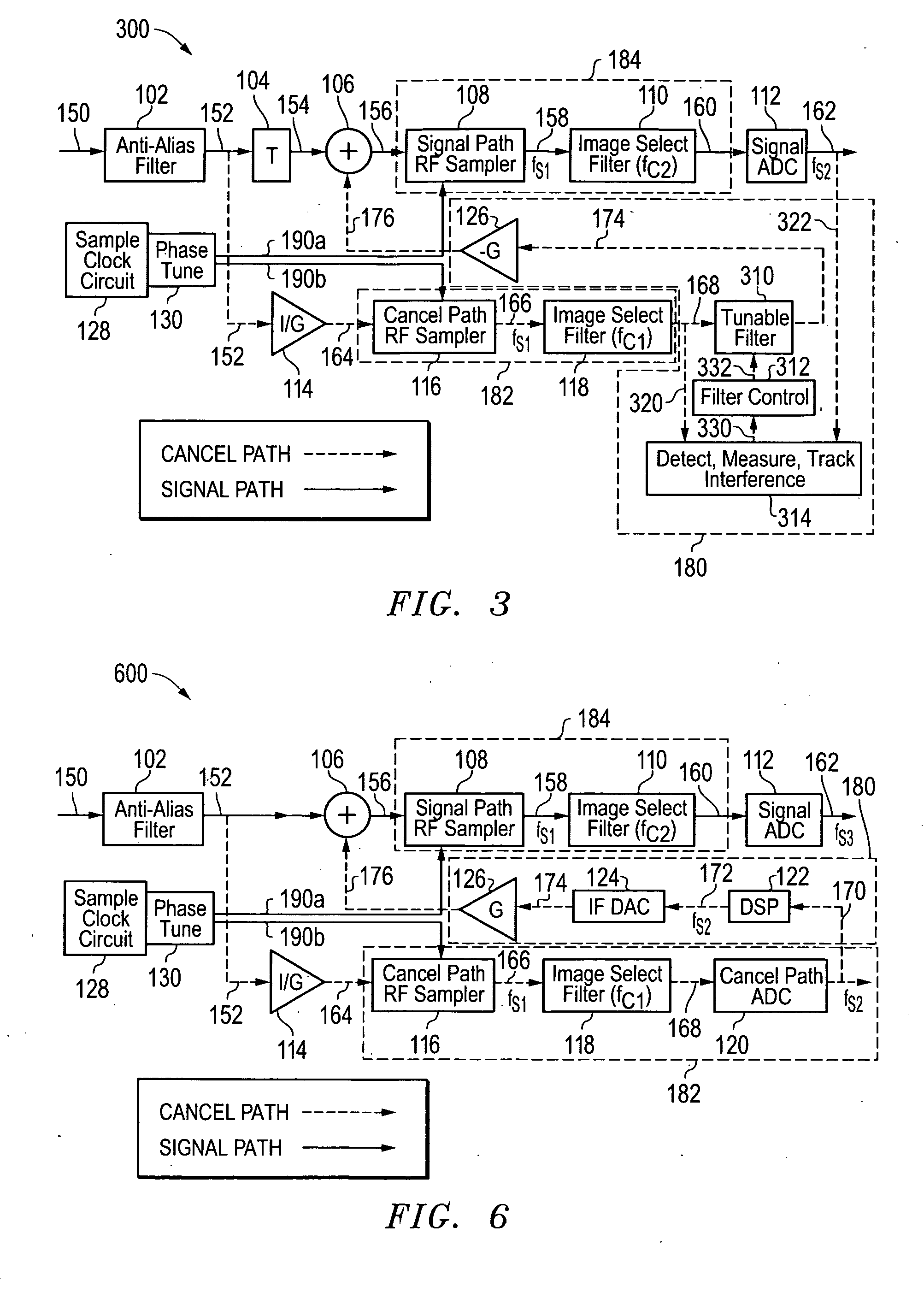Systems and methods for interference cancellation
a technology of interference cancellation and interference, applied in the field of signal processing, can solve the problems of loss of signal dynamic range, fixed notch filter, inability to adapt to new interferers, etc., and achieve the effects of reducing system complexity, cost, weight, and power
- Summary
- Abstract
- Description
- Claims
- Application Information
AI Technical Summary
Benefits of technology
Problems solved by technology
Method used
Image
Examples
Embodiment Construction
[0031]FIG. 1 illustrates a direct RF interference cancellation (DRIC) system 100 as it may be configured according to one embodiment of the disclosed systems and methods. As shown in FIG. 1, system 100 is configured to receive an analog input radio frequency (RF) signal 150 (e.g., from a RF antenna or other suitable source) and to provide a digital selected sample signal 162. Analog input RF signal 150 may include one or more desired signals in the presence of one or more interferer signals. In one embodiment, a DRIC system 100 may be employed to provide interference cancellation for a reconfigurable direct RF receiver to allow significantly improved dynamic range over conventional methods. Examples of such reconfigurable direct RF receivers include those receiver systems described in U.S. patent application Ser. No. 11 / 247,338 entitled “RECONFIGURABLE DIRECT RF BANDPASS SAMPLING RECEIVER AND RELATED METHODS,” filed on Oct. 11, 2005; and U.S. Pat. No. 7,436,910 entitled “DIRECT BAND...
PUM
 Login to View More
Login to View More Abstract
Description
Claims
Application Information
 Login to View More
Login to View More - R&D
- Intellectual Property
- Life Sciences
- Materials
- Tech Scout
- Unparalleled Data Quality
- Higher Quality Content
- 60% Fewer Hallucinations
Browse by: Latest US Patents, China's latest patents, Technical Efficacy Thesaurus, Application Domain, Technology Topic, Popular Technical Reports.
© 2025 PatSnap. All rights reserved.Legal|Privacy policy|Modern Slavery Act Transparency Statement|Sitemap|About US| Contact US: help@patsnap.com



